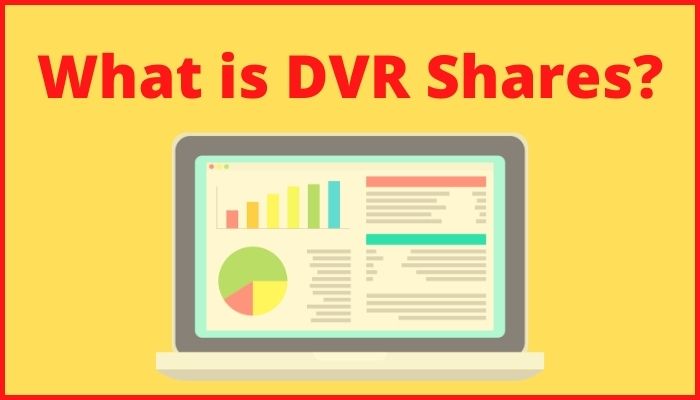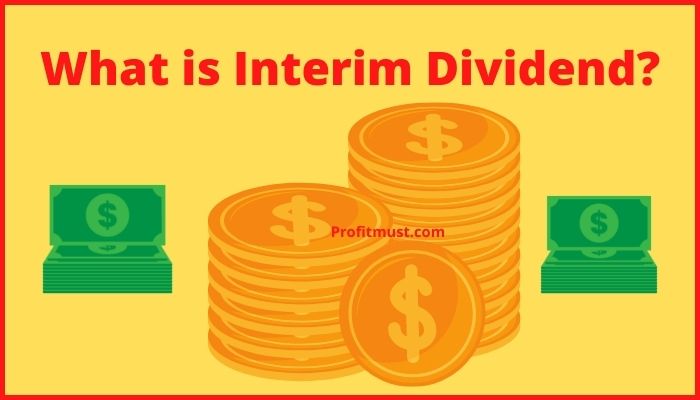When compared to small-growth firms, mature, large cap corporate entities are more likely to pay dividends. This is the case, due to the extreme large firms’ established business structures and consistent cash flows and profitability. Let’s take a closer look at What is Interim Dividend, which is among the several types of dividends.
Table of Contents
What is Interim Dividend?
An interim dividend is a payout to stakeholders that is announced and paid before a firm ‘s annual earnings have been evaluated. Dividends are commonly paid to shareholders of a firm’s ordinary stock usually quarterly or semi-annually.
Dividends are generally paid out as a proportion of earnings and are computed per share. The board of directors may decide to pay it, however, it is smaller than the dividend paid when the firm ‘s yearly financial results are released.
So that it does not affect the firm’s capacity to function if the annual results are lesser than predicted.
Example of interim dividend meaning
Tata Consultancy Services Ltd. said on July 8, 2021 that its first-quarter net profit increased by 28.5 percent year on year, with growth across all industries, and that it will issue an interim dividend of INR 7 to shareholders.
Important Points
- It is generally issued before a company’s annual general meeting and the publishing of its full financial results.
- Final dividends are given once a company’s financial statements have been released in their final form.
- As a result, final dividends come from current income, whereas intermediate dividends come from retained income.

How does it work?
Bonds or stocks are used to invest in businesses. Bonds pay a fixed rate of interest and provide investors priority over stockholders in the event of bankruptcy, but they do not profit from share price growth. Although stocks do not pay interest, they do pay dividends in some cases.
Dividend payments enable investors to gain from both interim and final dividends, and stock price gain, as a result of earnings growth. The board of directors declares it, but it must be approved by the shareholders.
In contrast, after earnings are called, a regular dividend, sometimes referred as a final dividend, is voted on and authorised at the annual general meeting. Payouts can be paid out in cash for both interim and final dividends.
Other Types of Dividends
After its meaning, let’s understand other types. There are two other types of dividends:
Final Dividend
In India, the final dividend is handed out following the audited final version of financial accounts. The annual general meeting (AGM) approves the dividend, which is computed depending on the amount of current income once they are known.
Special Dividend
A special dividend is a one-time payment that is not paid on a regular basis like the final and interim dividends. Dividends of this magnitude are uncommon since they are generally paid in response to extraordinary earnings or in anticipation of financial organizational changes.

Interim Dividend Vs Final Dividend
These are the major Difference between Interim Dividend and Final Dividend :
Declaration
Dividends are given out based on the number of Stocks owned. If you hold 50 stocks of firm X and it pays out INR 20 in dividends each year, you will earn INR 1000 in dividend income each year. If firm X doubles its dividend, it will pay out INR 40 each share, giving investors a total of INR 2000 per year.
Final dividends are announced and paid out together with earnings on a yearly basis. Final dividends are declared once profits are established, while interim dividends are paid from retained income rather than current income.
Retained Earnings
Undistributed profits are another term for retained earnings. Before the end of the year, firms usually pay these dividends on a quarterly or six-month basis. In India, Dividends are given every three months.
During a particularly strong earnings season or when regulation makes it more beneficial to do so, firms announce and payout it.
Financial Period
A final dividend is a predetermined sum paid every quarter, six months, or year. It can be expressed as a percentage of revenue or net income. It can also be paid from earnings left over after capital expenditures (CapEx) and working capital have been paid.
The dividend policy chosen is determined by management’s objectives and ambitions for the company’s shareholders.
It can pursue the same approach as final dividends, but because they are paid out before the fiscal year closes, the financial accounts that follow interim dividends are not audited.
When a company pays both an interim Dividend and final dividend in the same financial year, the interim dividend is usually the lesser of the two.

Conclusion
All dividends are good for investors. However, we advise you not to invest in stocks only for when they announce the dividend.
This is all from our side regarding What is Interim Dividend. Let us know your views in the comment section.
Other Interesting blogs related to What is Interim Dividend:
How to apply for rights issue online?
FAQ
Interim dividend in final accounts
A dividend paid before a company's annual general meeting (AGM) and the announcement of final financial results is known as an interim dividend. The firm's interim financial results are generally accompanied by this announced dividend.
What is interim dividend and final dividend
The interim dividend is often handed out before a company's annual general meeting and the disclosure of its final financial results. Final dividends are given after a firm 's financial statements have been released in their final condition
Interim dividend example
Tata Consultancy Services Ltd. said on July 8, 2021 that its first-quarter net profit increased by 28.5 percent year on year, with growth across all industries, and that it will issue an interim dividend of INR 7 to shareholders.
Interim dividend is declared by
The Board of Directors declares the interim dividend, while the investors decide on the ultimate payout at the Annual General Meeting.
Interim dividend Companies Act, 2013
A dividend is said to be an interim dividend if it is announced by the Board of Directors throughout any financial year out of surplus in the profit and loss account and out of earnings of the financial year in which these interim dividend is pursued to be publicly announced, according to section 123(3) of the Companies Act, 2013.

